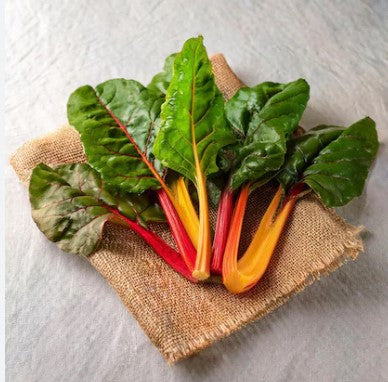Products
Categories
Best Sale
- Regular price
- Rs. 499.00
- Sale price
- Rs. 499.00
- Regular price
-
Rs. 609.00
Product sidebar
Product sidebar
Categories
Best Sale
- Regular price
- Rs. 499.00
- Sale price
- Rs. 499.00
- Regular price
-
Rs. 609.00

Swiss Chard Seeds (20g)
- Regular price
- Rs. 100.00
- Sale price
- Rs. 100.00
- Regular price
-
Couldn't load pickup availability
Share
🌿 Swiss Chard Seeds (Beta vulgaris var. cicla)
Description:
Swiss Chard, also known as Silverbeet or Leaf Beet, is a nutritious, leafy green vegetable prized for its vibrant stems and tender leaves. Belonging to the beet family, Swiss chard is grown for its edible leaves and stalks rather than roots. It is a hardy, fast-growing crop that thrives in both cool and warm climates, making it ideal for year-round cultivation.
Plant Characteristics:
-
Type: Biennial grown as an annual
-
Family: Amaranthaceae
-
Height: 12–24 inches (30–60 cm)
-
Leaves: Large, crinkled, glossy green leaves with colorful stems (red, yellow, white, or orange)
-
Flavor: Mild, earthy, and slightly sweet; less bitter than spinach
Growing Information:
-
Sowing Season: Spring and autumn (can tolerate light frost)
-
Sowing Depth: 1–1.5 cm (½ inch)
-
Spacing: 20–25 cm between plants, 40–45 cm between rows
-
Germination Time: 7–14 days
-
Sunlight: Full sun to partial shade
-
Soil: Well-drained, fertile soil rich in organic matter (pH 6.0–7.5)
-
Watering: Keep soil evenly moist; avoid waterlogging
Care Tips:
-
Regularly remove older leaves to encourage new growth.
-
Apply compost or organic fertilizer during the growing season for higher yield.
-
Mulching helps retain moisture and suppress weeds.
Harvest:
Begin harvesting tender outer leaves when plants are 6–8 inches tall, about 50–60 days after sowing. Continuous cutting encourages fresh leaf growth for multiple harvests.
Uses:
Swiss chard is a versatile leafy green that can be used raw in salads or cooked like spinach. It’s excellent in stir-fries, soups, curries, and sautés. The colorful stems can also be used decoratively in gourmet dishes.
Nutritional Value:
Rich in vitamins A, C, and K, as well as magnesium, iron, and antioxidants. It supports bone health, immunity, and detoxification while being low in calories and high in fiber.
